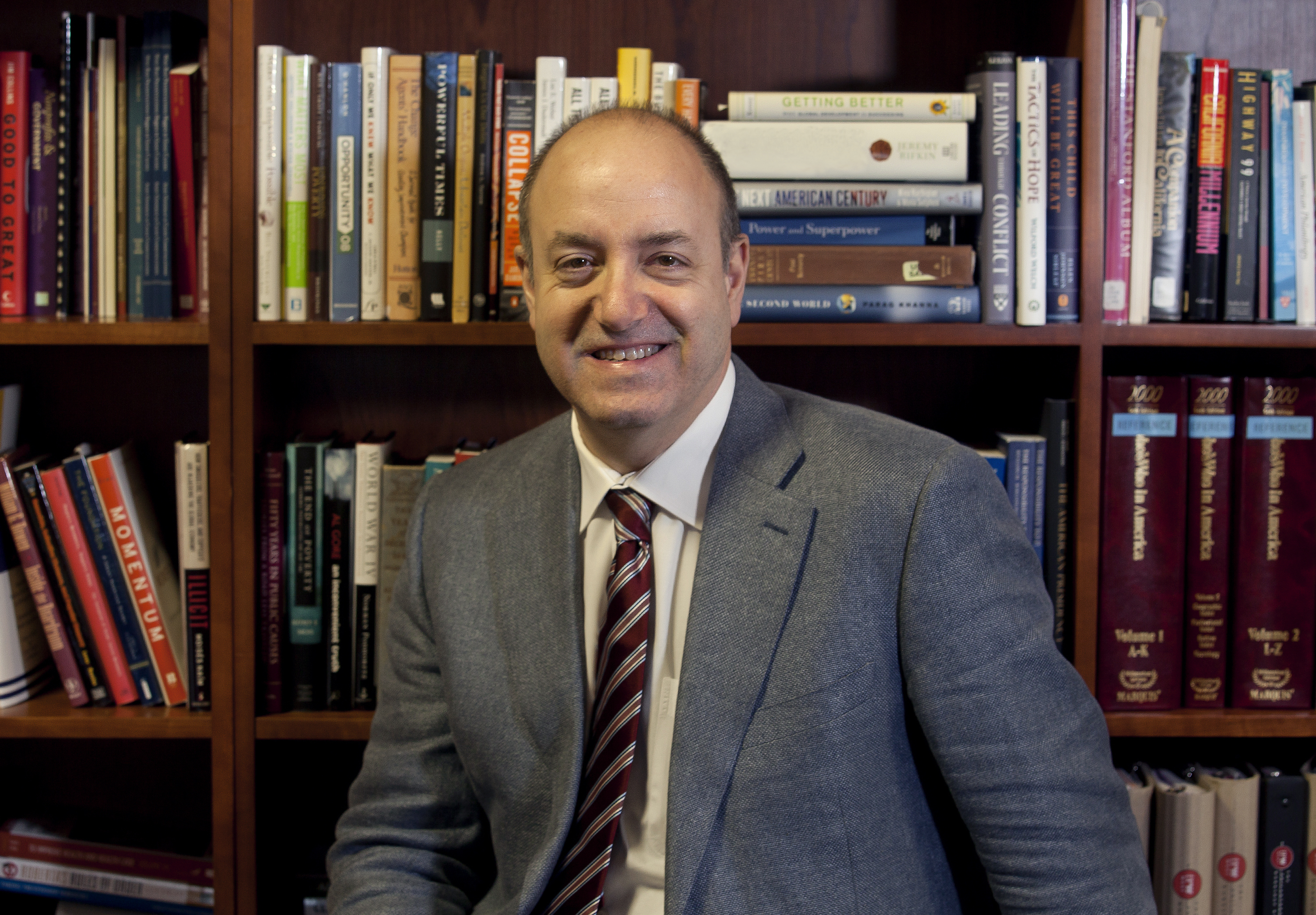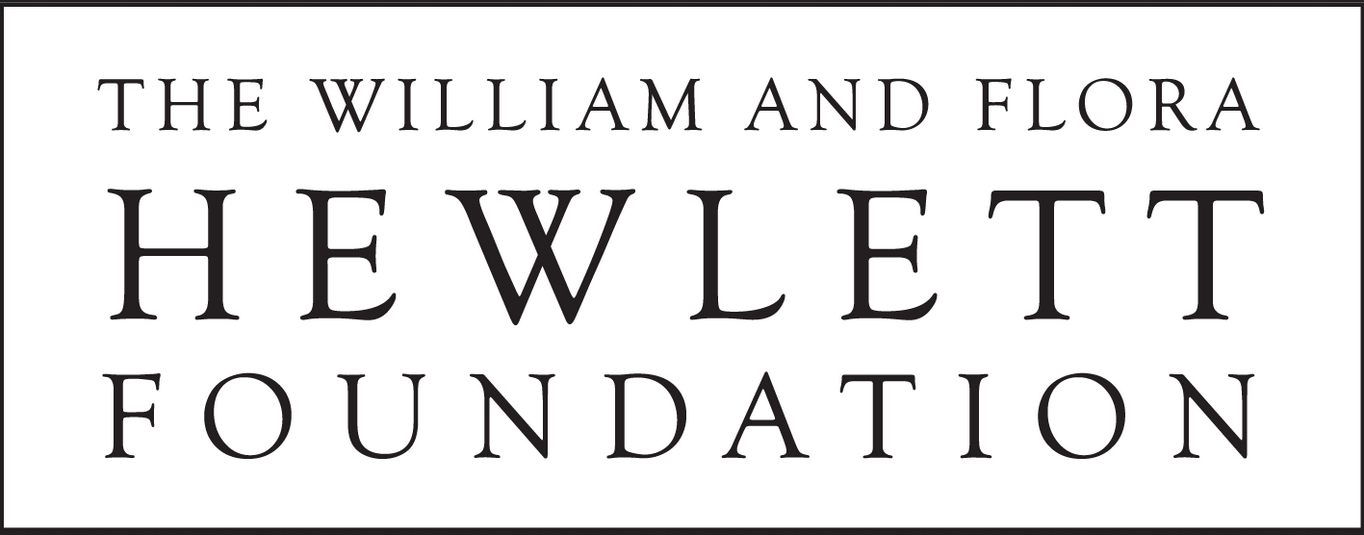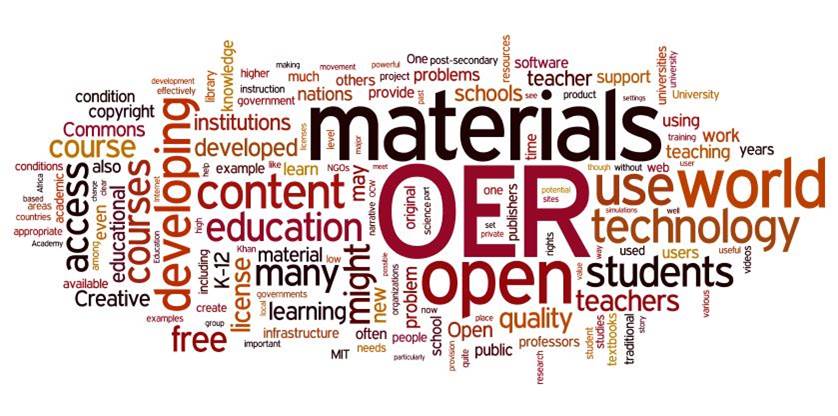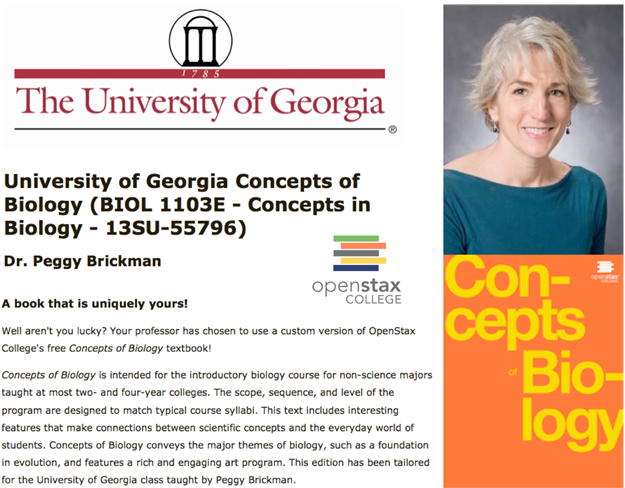HETL Note: We are pleased to publish this interview with Larry Kramer, a distinguished academic, education reformer, legal scholar, and current president of The William and Flora Hewlett Foundation, a global not-for-profit charitable foundation located in California, U.S.A. The interview provides an overview of Hewlett’s key activities that are helping to improve political, economic, and social conditions around the world. More specially, the interview highlights many important aspects of open education resources. Mr. Kramer believes that education is the foundation upon which everything in society rests and that education reforms like open education can provide an effective mechanism though which to catalyze needed and sustainable change and, in turn, help to improve the lives of people around the world. To this end, Mr. Kramer aims to alter the way people think about openness and sharing. In 2012 Hewlett distributed more than $300 million (USD) in grants to worthy causes around the world.
 Bio: Larry Kramer became president of The William and Flora Hewlett Foundation in September 2012. Before joining the Foundation, Mr. Kramer served from 2004 to 2012 as Richard E. Lang Professor of Law and Dean of Stanford Law School. At the start of his career, Mr. Kramer served as law clerk to U.S. Court of Appeals Judge Henry J. Friendly of the Second Circuit and U.S. Supreme Court Justice William J. Brennan Jr. Following his clerkships, Mr. Kramer was professor of law at the University of Chicago, the University of Michigan, and the New York University schools of law before moving to Stanford in 2004. He is a fellow of the American Academy of Arts and Sciences and a member of the American Philosophical Society. Mr. Kramer received an A.B. in Psychology and Religious Studies from Brown University in 1980, and a J.D. from the University of Chicago Law School in 1984.
Bio: Larry Kramer became president of The William and Flora Hewlett Foundation in September 2012. Before joining the Foundation, Mr. Kramer served from 2004 to 2012 as Richard E. Lang Professor of Law and Dean of Stanford Law School. At the start of his career, Mr. Kramer served as law clerk to U.S. Court of Appeals Judge Henry J. Friendly of the Second Circuit and U.S. Supreme Court Justice William J. Brennan Jr. Following his clerkships, Mr. Kramer was professor of law at the University of Chicago, the University of Michigan, and the New York University schools of law before moving to Stanford in 2004. He is a fellow of the American Academy of Arts and Sciences and a member of the American Philosophical Society. Mr. Kramer received an A.B. in Psychology and Religious Studies from Brown University in 1980, and a J.D. from the University of Chicago Law School in 1984.
*****************************************************************************
The Role, Development, Expansion, and Importance of Open Education Resources: An HETL Interview with Larry Kramer
Mr. Larry Kramer
The Hewlett Foundation, U.S.A
HETL: First, can you provide a brief overview of the Hewlett Foundation – its mission and vision – and your role with the organization?
Larry Kramer [LK]: Our mission at Hewlett is, as our tagline says, to help people build measurably better lives. We are a grant making foundation that supports organizations working on some of the world’s most urgent and challenging problems. Our primary areas of focus include environmental conservation and global climate change; global development and population, including family planning and women’s reproductive health; education; the performing arts; and improving practice in the field of philanthropy. We also have an emerging initiative examining how to reduce the negative effects of political polarization on democratic governance in the U.S.A.
 In all these areas, we practice what is known as strategic philanthropy—meaning we analyze problems in the domains in which we operate, develop theories of change on how to improve or alleviate those problems, set clear goals and establish metrics to evaluate our progress, and support organizations whose work can achieve our goals. Examples of some of our high level goals include limiting the rise in average global temperature to two degrees centigrade (climate change), and improving Deeper Learning outcomes for at least 15% of students in the U.S.A. (education). While keeping our focus on these ultimate outcomes, we constantly evaluate and adjust our strategies based on feedback from grantees and beneficiaries and other data we receive from the field.
In all these areas, we practice what is known as strategic philanthropy—meaning we analyze problems in the domains in which we operate, develop theories of change on how to improve or alleviate those problems, set clear goals and establish metrics to evaluate our progress, and support organizations whose work can achieve our goals. Examples of some of our high level goals include limiting the rise in average global temperature to two degrees centigrade (climate change), and improving Deeper Learning outcomes for at least 15% of students in the U.S.A. (education). While keeping our focus on these ultimate outcomes, we constantly evaluate and adjust our strategies based on feedback from grantees and beneficiaries and other data we receive from the field.
My role as president is to work with the board to set an overall vision and direction for the foundation while overseeing its operations, providing high-level guidance to programs, and working to continuously improve our impact and progress as a grantmaking organization trying to measurably improve people’s lives.
HETL: You are no stranger to education reform. When you were Professor of Law and Dean of the Stanford Law School you spearheaded several educational reforms. Can you tell us what motivates you to work in the area of educational reform and why you believe educational reform is needed?
LK: Education is the foundation on which everything else rests: our economy, our democracy, our cultural heritage, our future. To accomplish anything as a society, whether that be protecting the environment or addressing inequality, we need an educated, literate citizenry that can reason analytically, grasp scientific principles, and work collaboratively to solve the big problems that confront us. My interest in education reform stems from a desire to nurture citizens with these kinds of abilities and to begin from an early age.
HETL: What was the most impactful or personally meaningful reform you worked on at Stanford?
LK: Traditional legal education does a wonderful job teaching a core set of analytic skills. But it was wildly incomplete, because legal professionals need much more than this. They cannot help clients unless they can really understand their problems; and they cannot serve the law’s broader roles in fostering a just society unless they can step back and see how their choices matter. During my tenure as dean, we made two major changes in how we educate students: On the one hand, we integrated other kinds of normative and analytical thinking from other disciplines into the basic training—teaching student to think like their clients. On the other hand, we found ways to teach reflective lawyering and to foster a public service ethos through new forms of clinical training. Both were critical to me, and it was the overall package that mattered.
HETL: An important area of education reform that the Hewlett Foundation is involved in is open education resources (OER). Could you explain why the Hewlett Foundation is involved in OER and how it got started with OER?
LK: Why is easy: because free and open access to knowledge can have a profound impact on the lives of people around the world. As for how, Massachusetts Institute of Technology (MIT) approached the Mellon and the Hewlett foundations in 2001 and asked for support to make their entire curriculum of 1500 courses available free online, including releasing the materials under an open source license that would allow anyone to adapt and redistribute them. At a time when so much of the best and most important knowledge was inaccessible because of financial or intellectual property barriers, this was a very bold idea. Hewlett supported the initial project with approximately $16 million (USD) in funding while launching a broader OER initiative to encourage others to follow suit. Since then, we have worked broadly to build an ecosystem that can support, promote and model open education practices around the world. Examples of organizations we have supported include Creative Commons, various universities publishing openly licensed courses, the Open Courseware Consortium, and the PhET Interactive simulations (Physics Education and Technology Interactive Simulations, University of Colorado at Boulder), among many others.
HETL: Let us talk about the role, development, expansion, and the importance of OER. What is the role of OER in the broader educational landscape, say compared to other types of educational reforms? How does it fit in with the wider area of open education?
LK: OER was one of the first movements in education to take advantage of the power of the Internet to dramatically increase access to knowledge. It was inspired by the wild success of Wikipedia and the proven impact power of the Open Source software movement. Early OER projects successfully showed that educational organizations could be much more open in their practices. MIT released its entire curriculum under an open license without hurting the quality of its education or in any way diminishing its reputation as one of the world’s great universities. In many ways, OER was a precursor to the recent explosion of MOOCs (Massive Open Online Course) and other online courses. People today take for granted the ability to “google” a topic and find a free course taught by one of the top instructors in the world. That simply was not the case in 2001.
Figure 1. Open Resource Education (Image courtesy of Kathy Nicholson)
By the early 2000s, it was clear that we were reaching a crisis point in higher education: demand dramatically exceeded supply, creating enormous challenges around both access and productivity. And it is only getting worse. In 2010, our grantee the Commonwealth of Learning reported that:
Nearly one-third of the world’s population (29.3%) is under 15. Today there are 165 million people enrolled in tertiary education. Projections suggest that participation will peak at 263 million in 2025. Accommodating the additional 98 million students would require more than four major universities (30,000 students) to open every week for the next fifteen years. (Daniel, 2011)
Our traditional campus-based model of higher education cannot conceivably solve this problem. Hewlett sees OER as a powerful lever that can dramatically increase access for these millions of learners while simultaneously improving the productivity of the system.
HETL: How is the Hewlett Foundation involved in the development and expansion of OER?
LK: For many years, we supported different models of OER, exploring variations on how to make it work, help it scale, and adapt it to different contexts. More recently, we have shifted to focus more on building the infrastructure necessary to sustain an OER ecosystem. We want to see OER move further into mainstream education, and we see it potentially spreading into other sectors including government, private markets, and educational institutions around the world. We expect OER to become part of how we value and develop education, akin to what “green” and “organic” have become in how we value and develop commercial products and food. It is already starting to happen, too, with the rapid growth of organizations like Expeditionary Learning, Khan Academy and OpenStax. OER is becoming part of the educational mainstream.
We also see growing evidence of impact beyond just improved access. Research shows that using OER in classrooms can improve learning outcomes, especially for low income students. To take just one example, we have funded the OpenStaxCollege initiative out of Rice University (U.S.A.), which is developing fully open, market quality textbooks for high enrollment, post-secondary courses. To date, OpenStax College has published six textbooks (Physics, Sociology, Biology, Concepts of Biology, Anatomy and Physiology and Statistics), with several more in production. The published texts have been adopted by 400 institutions, saving 55,000 students a total of $5.2 million in just over a year. An additional 3 million people outside these institutions have accessed the textbooks online. To further improve learning outcomes, OpenStax is conducting machine learning research that will eventually integrate its library of free books into a sophisticated personalized learning system that adapts the texts to the learning needs of each student. As illustrated in Figure 2, the University of Georgia is one of 400 institutions that have adopted an OpenStax College OER Textbook.
Dr. Peggy Brickman uses the open license and OpenStax’ Connexions software platform to create a version tailored for her students.
Figure 2. OpenStax’ Connexions software platform
HETL: What is the overall importance and benefits of OER with respect to the future of education, in general, and online education, in particular?
LK: In the early days, the novelty of OER was simply that it made large amounts of knowledge available for free. Today, that is taken for granted, and the real importance of OER is in the idea of openness: the way in which teachers and learners can adapt and customize resources in whatever way is most appropriate for their particular context.
Free proprietary courses do not do that. Take MOOCs, which are all the rage today. MOOCs have been terrific in enabling universities to provide widespread access to their courses. But almost all MOOCs are still offered under proprietary licenses that prohibit making changes or reusing the material in other ways. Yet if there is one thing we know about learning, it is that personalization is critical. What works at MIT will not necessarily work at a community college in Tennessee, and likely as well it will not work in a technical school in Kenya. Putting online courses and resources under an open license allows instructors around the world to adapt these resources to their local context, whether that be a lecture hall in Indonesia or a blended learning high school class in California. Therein lies the real power to reshape education globally and in a positive way.
HETL: Thank you for your time. Are there any other points you would like to make regarding OER?
LK: Part of our goal with OER is to change the way people think about openness and sharing. Our current education system bottles everything up with “all rights reserved” copyrights that can only be overcome with significant justification and effort. We want to flip the presumption, to make openness and sharing the presumed default. With such a shift in mindset, we could dramatically increase access and productivity in higher education—and maybe find a way to serve those next 100 million learners around the world.
References
Sir John Daniel, Commonwealth of Learning (COL), “Tertiary Education: How Open?”, May 20, 2011, at http://www.col.org/resources/speeches/2011presentation/Pages/2011-05-19b.aspx.
……
Notes
Interview date & place: December 1 – 20, 2013 via email.
HETL interviewer: Patrick Blessinger
This interview article was prepared for publication by Krassie Petrova, Editor-in-Chief, International HETL Review (IHR).
Suggested Citation
Kramer, L. (2014, February 25). The Role, Development, Expansion, and Importance of Open Education Resources: An HETL Interview with Larry Kramer. The International HETL Review. Volume 4, Article 2, https://www.hetl.org/interview-articles/the-role-development-expansion-and-importance-of-open-education-resources-an-hetl-interview-with-larry-kramer
Copyright © [2014] Larry Kramer and International HETL Association
The author(s) assert their right to be named as the sole author(s) of this article and the right to be granted copyright privileges related to the article without infringing on any third party rights including copyright. The author(s) retain their intellectual property rights related to the article. The author(s) assign to HETL Portal and to educational non-profit institutions a non-exclusive license to use this article for personal use and in courses of instruction provided that the article is used in full and this copyright statement is reproduced. The author(s) also grant a non-exclusive license to HETL Portal to publish this article in full on the World Wide Web (prime sites and mirrors) and in electronic and/or printed form within the HETL Review. Any other usage is prohibited without the express permission of the author(s).
Disclaimer
Opinions expressed in this article are those of the author, and as such do not necessarily represent the position(s) of other professionals or any institutions.






